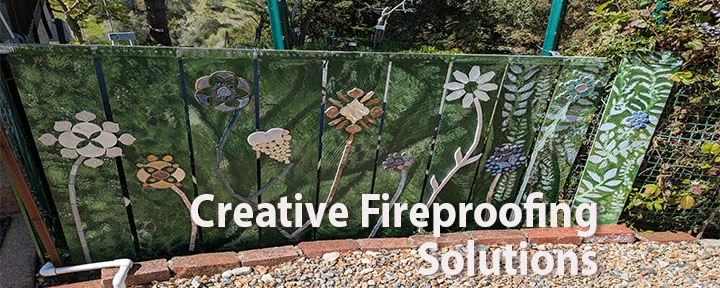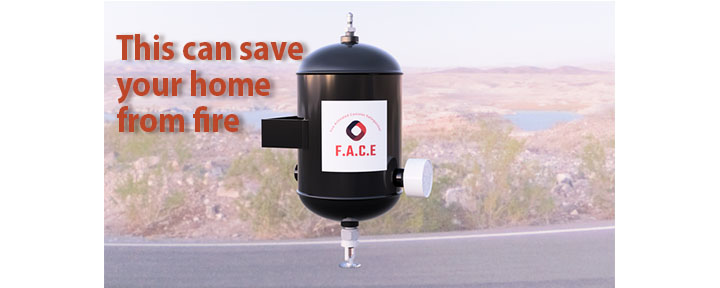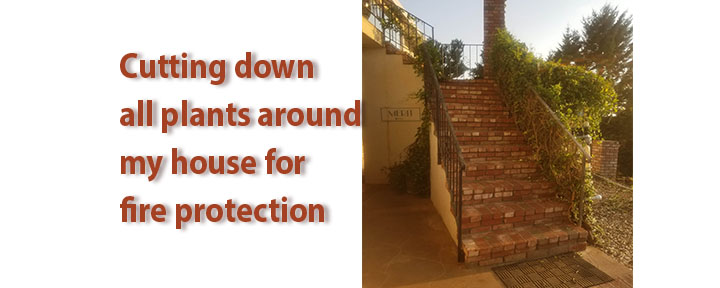
For the past five years, Central Fire has actively engaged with Firewise communities to educate homeowners about defensible space, evacuation routes, road clearances, and communication via MURS radios. They’ve visited homes, walked properties, investigated egress routes, recommended address, street, and fire truck signs, and identified problem areas in Zone 0 (0-5 feet), Zone 1 (5-30 feet), and Zone 2 (30-100 feet). As a Firewise leader, I’m grateful for their guidance, which has provided invaluable tips on protecting our homes from wildfires.
Now, Central Fire is stepping up its efforts. With the increasing devastation caused by wildfires across California, CalFire has mandated that fire departments enforce Zone 0 regulations. This means that Central Fire—and all fire departments across California—will no longer overlook combustible materials within five feet of homes. Instead, they will conduct unannounced inspections and issue citations for noncompliance. This is a significant step forward in ensuring fire safety for our communities.
California’s Wildfire Protection Laws: AB 3074 & SB 504
In response to escalating wildfire risks, California enacted AB 3074 (2020) and SB 504 (2024), requiring homeowners to take specific fire-hardening measures:
• AB 3074 (2020): Introduced the “ember-resistant zone”, requiring homeowners to maintain a five-foot buffer around their homes, free of flammable materials.
• SB 504 (2024): Strengthened enforcement mechanisms, empowering fire departments to issue fines for noncompliance.
By adhering to these laws, homeowners can significantly reduce the risk of wildfire damage and contribute to a fire-resilient community.
Creative Fireproofing Solutions for Zone 0
Retrofitting your home for wildfire resistance doesn’t have to mean sacrificing aesthetics. There are innovative ways to eliminate combustibles while maintaining visual appeal:
• Replace hedges with decorative tile or stone walls for an elegant and fire-safe boundary.
• Cover wooden planters with tile or stone to maintain a lush garden without fire risk.
• Use fire-resistant potted plants, such as succulents, arranged creatively to enhance curb appeal.
• Repurpose tile and marble samples from local stores to create non-combustible, artistic garden features.
Key Steps for Retrofitting Your Home’s Exterior
1. Ember-Resistant Zone (0-5 Feet from Home)
• Remove all combustible materials such as mulch, dried leaves, firewood, and wooden furniture.
• Replace flammable landscaping (juniper, pine, bamboo) with fire-resistant plants like succulents or rock gardens.
• Install non-combustible hardscaping (concrete, gravel, stone walkways).
• Use metal or Class A fire-rated roofing materials instead of wood shake shingles.
2. Fire-Resistant Siding and Walls
• Replace wooden or vinyl siding with non-combustible materials like fiber cement, stucco, or metal.
• Seal gaps and cracks in siding and foundations with fire-resistant caulking to prevent ember intrusion.
• Install fireproof skirting around raised foundations and decks to prevent embers from accumulating underneath.
3. Defensible Space (5-100 Feet from Home)
• Maintain defensible space by clearing dry vegetation and trimming overhanging tree branches at least 10 feet from roofs.
• Store firewood and propane tanks at least 30 feet from structures.
• Space trees at least 10 feet apart and keep grass mowed to less than 4 inches.
4. Fire-Resistant Windows and Doors
• Upgrade to tempered glass windows, which are more resistant to heat and flames.
• Install metal mesh screens (1/16-inch to 1/8-inch) on vents to prevent embers from entering attics and crawl spaces.
• Use non-combustible or fire-rated doors, such as those made from metal or solid-core wood.
5. Roofing and Gutter Protection
• Opt for a Class A fire-rated roof (asphalt shingles, metal, clay, or concrete tiles).
• Install metal drip edges to protect exposed roof sheathing.
• Use gutter guards or keep gutters clean to prevent dry debris from catching embers.
6. Fire-Resistant Decking and Fencing
• Replace wooden decks with fire-rated composite materials or metal.
• Use metal fencing near structures instead of wood, which can easily ignite.
7. Water Supply and Fire Tools
• Ensure easy access to a water source, such as an outdoor hose with a high-pressure nozzle.
• Keep fire-resistant tools (rake, shovel, and metal buckets) on hand for emergency use.
Final Thoughts
Fire safety is no longer optional—compliance with California’s wildfire protection laws is now being actively enforced. Taking steps to eliminate combustible materials within five feet of your home and implementing fire-resistant upgrades will help protect your property, ensure regulatory compliance, and strengthen community resilience.
By sharing before-and-after photos of creative, fire-safe retrofits, we can inspire and educate other homeowners. Together, we can make our neighborhoods safer from wildfires and create homes that are both beautiful and fire-resistant.





